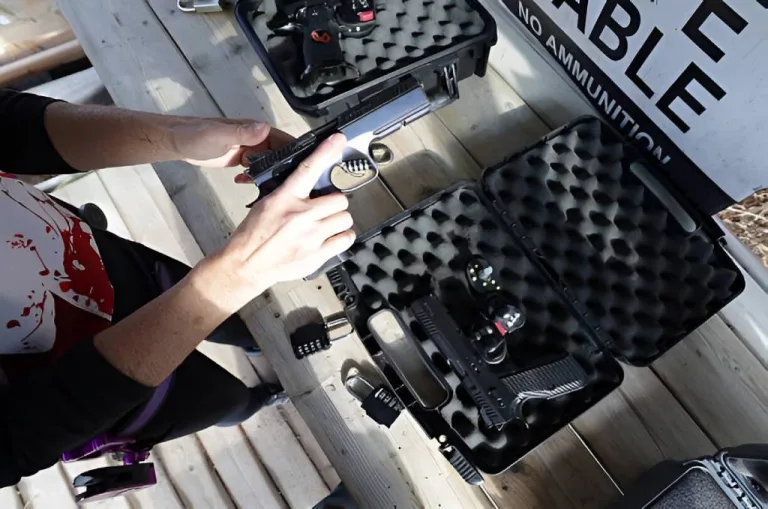Tips for Improving Your Grip Strength and Control for Better Batting Performance
Success at the plate in baseball often boils down to the fine details, and one of the most critical yet overlooked aspects is your grip on the bat. A strong, controlled grip can enhance swing speed, increase power, and improve accuracy, ultimately helping you make better contact with the ball. By focusing on both grip strength and bat control, players at any level can elevate their overall performance. In this guide, we’ll explore key strategies to develop a solid baseball bat grip, improve forearm and hand strength, and refine your control for consistent, powerful swings.
The Importance of a Proper Baseball Bat Grip
The way you hold your bat directly influences your ability to make clean, effective contact with the ball. A proper baseball bat grip creates balance between strength and flexibility, allowing you to maximize swing mechanics while maintaining control through the hitting zone. Too tight a grip can lead to muscle fatigue and reduced bat speed, while too loose a grip can compromise stability and timing. The ideal grip offers a combination of firmness and relaxation, giving you the dexterity needed to adjust to different pitch speeds and locations. Developing this balanced approach ensures that your wrists remain fluid, allowing for quicker reactions and smoother follow-throughs.
A correct grip also aligns your knuckles for optimal bat rotation, which directly affects the barrel’s path and your ability to drive the ball. Most professional hitters maintain a grip where the knocking knuckles are in line or slightly offset, creating natural wrist mobility. When paired with proper stance and mechanics, this technique leads to a more efficient swing and reduces the risk of over-gripping, which can slow you down. Over time, practicing a consistent baseball bat grip becomes second nature, giving you the foundation to adapt to challenging game situations.
Building Grip Strength for Enhanced Bat Control
Grip strength plays a vital role in improving batting performance. Your hands, wrists, and forearms must be strong enough to control the bat through the entire swing without tensing up. Developing this strength not only improves stability but also helps you recover from off-balance situations and handle high-velocity pitches with more precision. Exercises such as wrist curls, reverse curls, and grip trainers are highly effective for strengthening the muscles responsible for maintaining bat control.
Additionally, incorporating functional strength training, like farmer’s carries or using resistance bands, can help build endurance in your grip without sacrificing flexibility. Another often-overlooked component is finger strength, which is crucial for maintaining a secure baseball bat grip during high-pressure moments. Using hand grippers, squeezing stress balls, or performing towel twists can develop finger dexterity and enhance your ability to manipulate the bat quickly. When grip strength improves, your hands naturally stay relaxed longer, allowing you to generate explosive bat speed without unnecessary tension.
Consistency is key here—integrating grip-focused exercises into your regular training routine ensures progressive gains over time. Whether you’re in the off-season or prepping for a game, dedicating even 10 minutes a day to grip strength can make a noticeable difference in how comfortably you hold and control the bat.
Techniques to Improve Bat Control and Swing Consistency
While grip strength lays the foundation, bat control depends heavily on technique. Proper hand placement, smooth wrist movement, and controlled follow-throughs all play critical roles in creating a consistent, repeatable swing. Start by ensuring that your baseball bat grip places your hands close together without overlapping excessively, which can cause unnecessary stiffness. A compact grip allows you to maneuver the barrel more efficiently and make micro-adjustments to incoming pitches.
Drills focused on contact points can help refine bat control. One effective method is using a batting tee to practice striking different pitch locations, forcing your hands to adjust dynamically while maintaining the same grip pressure. Short bat drills can also sharpen precision by forcing you to engage your hands more actively during the swing. Additionally, practicing with weighted bats can improve control by developing the muscles involved in stabilizing the bat throughout the swing path.
Another critical aspect of bat control is maintaining relaxed wrists. Over-gripping often leads to restricted motion, reducing your ability to adjust mid-swing. Instead, aim for a firm but fluid hold, letting your wrists naturally guide the bat through the strike zone. As you strengthen your mechanics, the synergy between a controlled baseball bat grip and well-timed wrist action becomes more apparent, leading to consistent ball contact and increased hitting power.
Drills and Training Methods for Better Batting Performance
Targeted drills are essential for translating grip strength and control into actual batting success. One of the most effective exercises is the bottom-hand drill, where you isolate the lower hand to focus on building strength and control independently. This technique helps you develop a stronger lead hand, which plays a critical role in guiding the barrel through the zone. Similarly, top-hand drills enhance bat speed and allow for better adjustments to varying pitch types.
Incorporating resistance bands into your warmups can also improve both grip strength and swing mechanics simultaneously. By adding controlled resistance, these bands train your forearms and wrists to generate force while maintaining stability. Another valuable tool is the use of specialized grip-enhancing batting gloves, which can provide extra traction and reduce slippage during swings, especially in high-humidity or rainy conditions.
Live batting practice remains one of the best ways to reinforce all the elements you’ve been training. Facing live pitching forces you to combine grip strength, bat control, and timing in a dynamic environment, helping you identify weaknesses and fine-tune your technique. Over time, consistent practice under realistic conditions builds confidence, muscle memory, and the ability to adapt to pitchers of all styles and speeds.
Optimizing Your Baseball Bat Grip for Maximum Results
Even with strength and control training, optimizing your baseball bat grip ensures that all your efforts translate into better on-field performance. Begin by experimenting with slight adjustments in hand placement and grip pressure until you find a comfortable yet firm hold that feels natural. Some players prefer a slightly “choked-up” grip, moving their hands higher up the handle for increased control, while others favor a lower grip for added power. Finding the right balance depends on your swing style, physical build, and hitting strategy.
Choosing the right bat size and handle texture can also influence your grip efficiency. A bat that’s too heavy or has an overly smooth surface can make it harder to maintain proper control, especially during long at-bats. Many players benefit from applying grip tape or pine tar to improve friction and achieve a more secure hold without over-tightening their hands. The goal is to allow for complete bat control without compromising swing speed or flexibility.
Mental preparation plays a role as well. Staying relaxed in the batter’s box, focusing on your breathing, and trusting your training can help prevent tension in your grip. When you approach each pitch with a calm, confident mindset, your hands naturally settle into a controlled baseball bat grip, letting your mechanics take over and increasing your chances of solid contact.
Conclusion
Improving your grip strength and control is one of the most impactful ways to elevate your batting performance. A proper baseball bat grip sets the foundation for efficient mechanics, increased swing speed, and consistent contact, while targeted strength training and technique refinement ensure lasting improvements over time. By focusing on grip development, practicing control-enhancing drills, and experimenting with adjustments that suit your style, you position yourself for success at the plate. Whether you’re a beginner looking to build fundamentals or an experienced player seeking a competitive edge, mastering your grip provides the confidence and precision needed to maximize your potential as a hitter.




